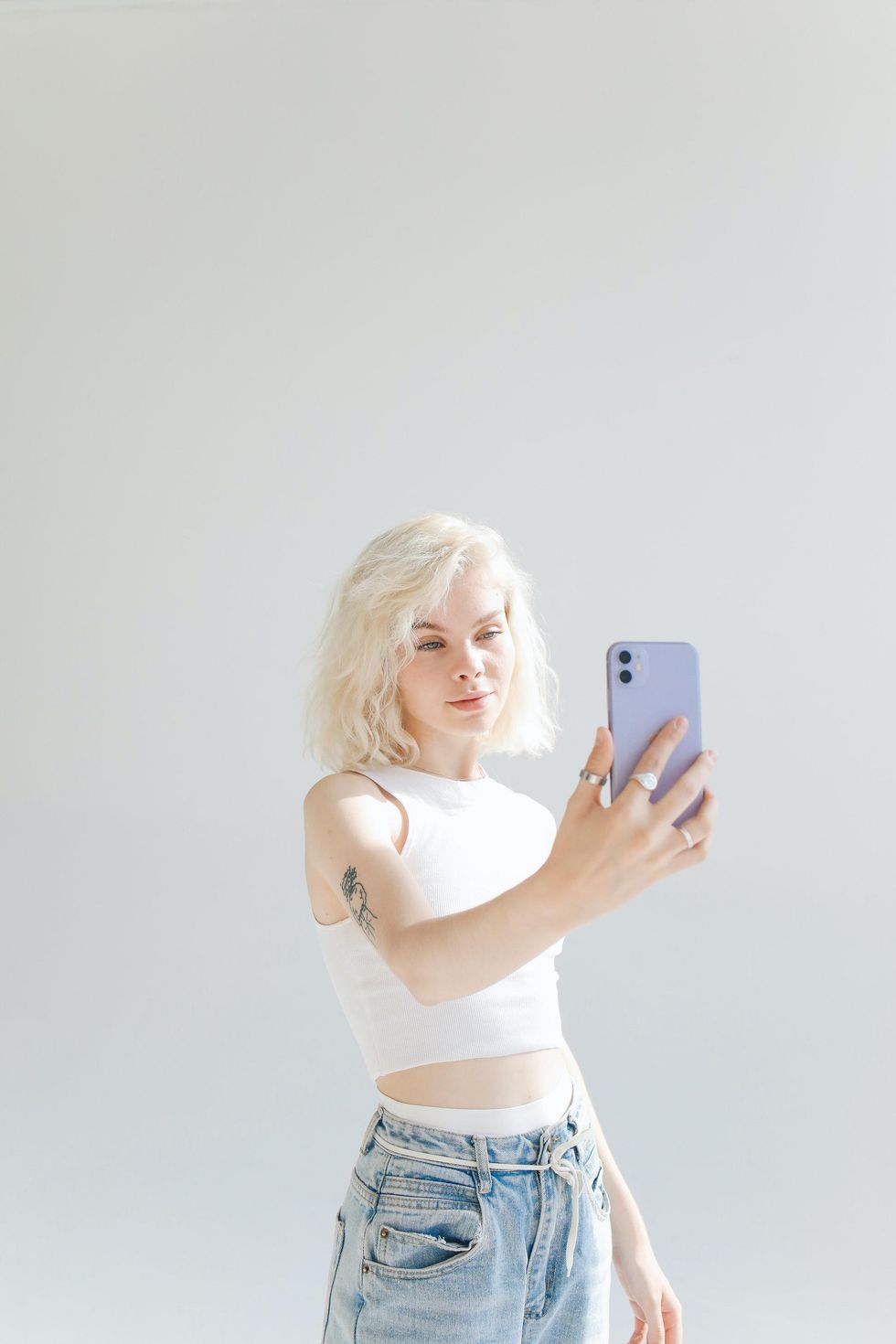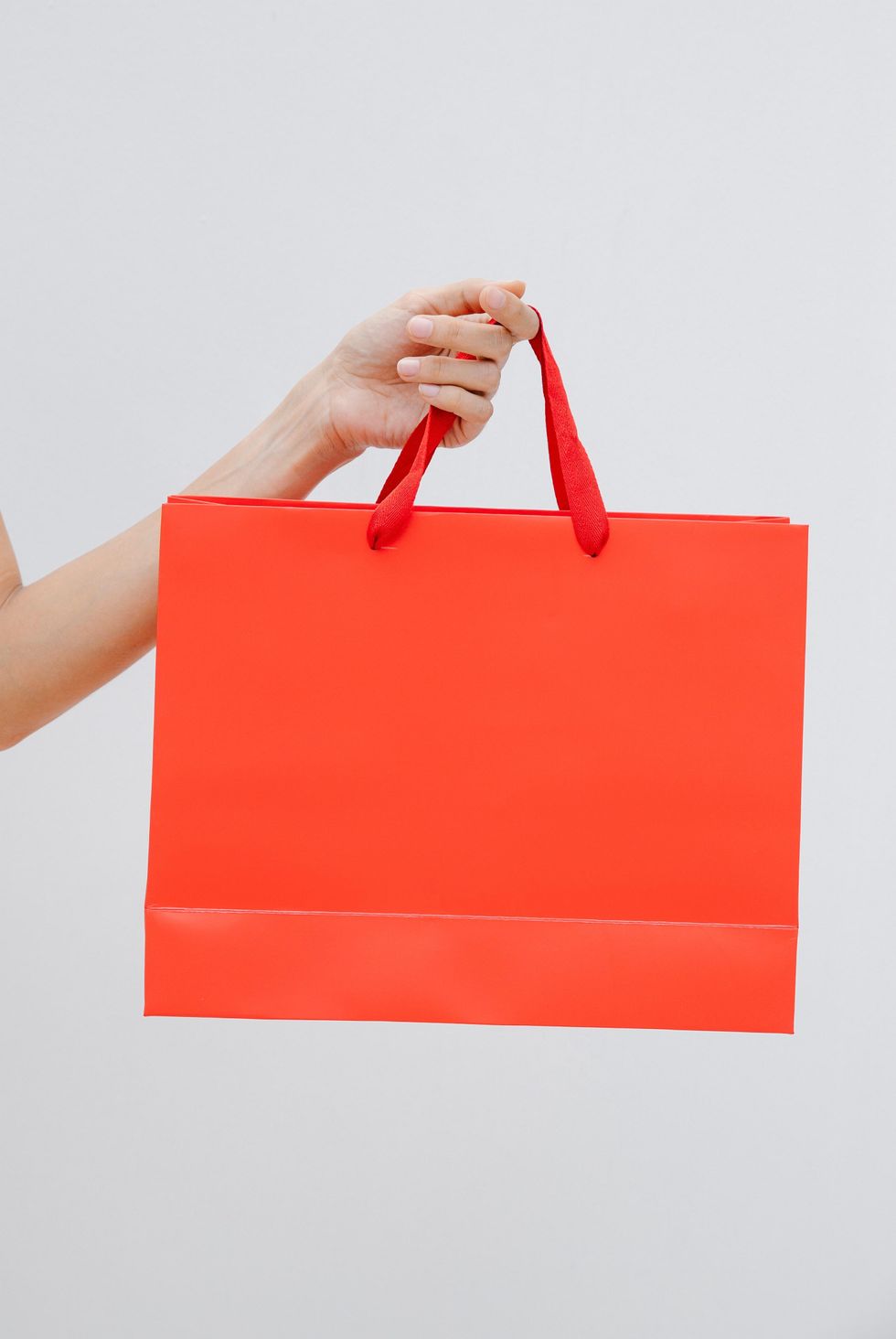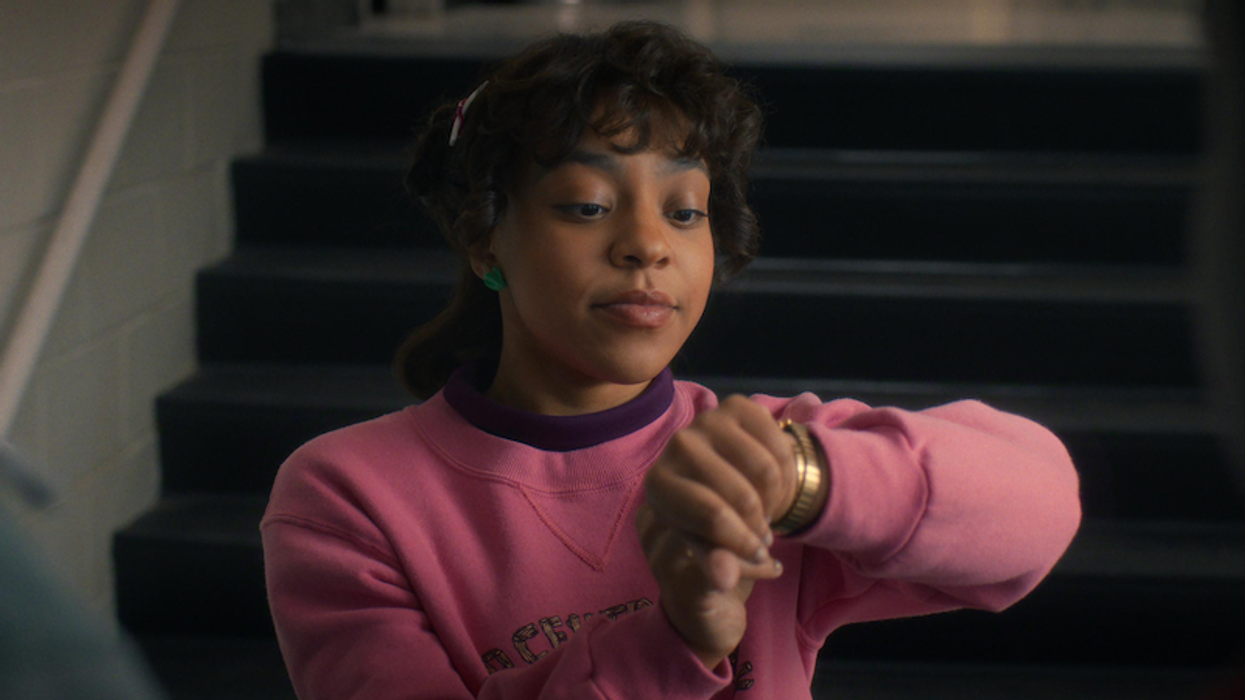The internet has had enough.
We Need To Take A Second Look At De-Influencing, TikTok's Anti-Trend

Meredith Holser is the Shopping Editor at Brit + Co, covering everything from seasonal fashion trends and the best grocery finds from Trader Joe's to shoes actually worth splurging on and life-changing beauty products. Outside of work, you can catch Meredith hiking, trying new recipes, and dreaming about having a yummy little treat.
De-influencing has become an emerging counter to the never-ending stream of influence on the internet – what exactly is it, and what does it mean for our shopping habits? After the recent Stanley tumbler mania, it's time to take a step back and look at our craze for overconsumption.
What is influencing?

Photo by Polina Tankilevitch / PEXELS
If you hang out anywhere on the internet, especially on social media platforms like Instagram and TikTok, you are no stranger to influencing.
By definition, to influence is to do just that – “have an influence on,” but the word has taken on a whole new meaning in the modern age. It’s essentially a new(ish) marketing technique that employs social media creators to promote certain products and services.
We’ve all seen the classic examples of internet influencing on our daily scrolls. It’s a cute gal showing you her favorite beauty products through a nicely cut video, or tapping through a quick outfit check story. It’s perfectly polished ‘get ready with me’ vlogs and ‘dupe’ videos.
These appealing posts are typically marked with a “paid promotion” disclaimer alongside the content. The content of the posts or the person showing them off just makes you want to buy something – and boom, you’re influenced!
@ashlynnrudzinski don’t mind the bone in the back lol #fashiontiktok ♬ original sound - Tik Toker
Though internet influencing can benefit not only the companies employing the strategy, but also the influencers themselves, more and more consumers are catching on to the idea that it’s not exactly a great model for promotion and consumption.
Influencing has become overdone – it fuels overconsumption and shopping addictions, makes the consumer feel empty and left out by determining trends, and oftentimes encourages unsustainable practices in a time where we should be interested in the opposite.
The Case for De-Influencing
For me, the term ‘de-influencing’ started popping up on the same platform that its counterpart did: TikTok. I normally get a lot of consumer-forward content on my For You Page, whether it’s makeup, gym outfit recommendations, or new food products that I need to know about. Whether the person on my screen is a paid influencer or not, the app and community surrounding it makes me feel like I need whatever they’re putting on display. So yes, influencing does work.
De-influencing aims to combat that insatiable need and craving for material things that are typically encouraged by internet influencers and trends. Users are coming out and realizing that you don't need twelve mascaras to feel prettier, you don't need fifteen different colors of the same tank top to look cooler, you don't need that limited-edition Stanley tumbler to stay hydrated.
Essentially, de-influencing is the rejection of influencer culture, which consumers have just had enough of. It feels like an extremely brave declaration, especially in our society that constantly promotes wanting more.
@ramenasaidwow #stitch with @eliseeatsplants #makeup #skincare ♬ original sound - Ramena
What is de-influencing?
All of this is not to say that buying things that make you happy is bad. It’s okay to want certain things when they’ll bring you happiness in a time when you feel down.
One small purchase here and there for the sake of your own sanity is a habit I know very well, and it's okay to feel tired, depressed and on the hunt for more in our society. One of the main motivations behind de-influencing is getting you, the consumer, to rethink your consumption habits, and reject the desire to be ‘on trend.’
Will the latest and greatest really make you feel more valued in society? Rock what you really think is cool. Rock a sustainable, small brand. Repurpose and donate your clothing. Some things you just don't need to enhance your life, though it feels like every force is working against you, especially internet influencers. There is beauty in appreciating what you already have, instead of endlessly searching for something that likely won’t fulfill you.
@basicofcourse people that are against fun little drunk purchasing are misogynists I won’t be elaborating #excessconsumption #deinfluencing #intentionalshopping #intentionalliving #funlittledrink #sustainability ♬ original sound - allison
The Impact of Influencers and Consumer Culture
Trends make consumers feel left out, or obligated to participate.
TikTok is a vast breeding ground for the newest trends in beauty and fashion – this realm is where I see the most influence pushed. Though trends can be fun, the internet seems to have a new trend every other day, and keeping up with them is unrealistic.
When consumers look toward creators with large internet followings for trends, especially creators who actively promote and influence trends, the idea that they need certain things to stay in the loop gets deeply rooted.
Take last year’s Ugg Mini surge for example. The low-rise boot was pretty much everywhere I went (and scrolled). It was all the rage, and cozy outfits didn't seem complete without them. “This is your sign to get the Ugg Minis,” one creator preached. “You need these boots in your life,” another said. And this went on and on. It felt like everyone had the shoes, and I definitely contemplated grabbing myself a pair, cycling between adding them to my cart and taking them out a few days later. They’re expensive, I told myself, but I would be dressing like that one cool influencer. It sounds shallow, but it was hard not to feel like I was part of a trend – something bigger than myself – and I know others that feel the same way.
@sadgrlswag De-influencing you, no more over consumption or else 💣💥! 😡😤 #GenshinImpact34 ♬ original sound - Estef
@overcoming_overspending What else am I missing? Things that social media convinced us are normal but aren’t. #overconsumption #impulsebuying #implusebuyer #deinfluencing #spendingproblems #creditcarddebt #overspendingmoney #overspender #influencedbytiktok #influenced ♬ original sound - Paige | Spending Coach
Influencer culture promotes unrealistic expectations for consumption.
The urge to be part of trends encourages overconsumption and shopping addictions. When we’re getting bombarded with marketing messages every day via influencers, we want something different and new every day.
TikTok’s search bar as well as Instagram’s shopping tab make it so easy to fall into a rabbit hole of capitalistic consumption: a plethora of cool-looking internet personalities promoting countless clothing items and life hack tools, makeup hauls, and it definitely goes on. After a while, staying on-trend becomes financially unrealistic. When all we see influencers post are insane PR hauls and new products every day, we want what they have, but we forget that they’re just like us – they have bills to pay, and lives to live. Like I say all the time, social media is a highlight reel. Plus, this is the influencer’s job, to post and influence you.
This element of need that’s embedded in influencer culture is quite contradictory to our generation’s pleads for sustainable practices. While we face a real climate crisis that’s fueled by production and shipping, it seems like the right thing to do to change our consumption habits to be more sustainable – but a lot of younger consumers don't really know how to practice what they preach. It’s easy to get sucked into the internet and do what it tells them to. It’s hard to not want what makes others look cool.
Big influencers often recommend fast-fashion giants like Shein to their audiences, without either stakeholder realizing the impacts of the industry. Fast fashion production contributes about 8-10% of the world’s carbon emissions, and 20% of global industrial water pollution. Not only does production itself impact the environment, but shipping goods also contributes to global carbon emissions, about 3%. Though companies are setting measurable goals to improve waste and emissions by 2050, it’s not just on them to change their habits. You can change your consumption habits at an individual level:
How To Be a More Conscious Consumer

Photo by Angela Roma / PEXELS
- Think critically about your need for the item(s).
- Evaluate if the internet is just trying to sell you something.
- Research the company that’s selling the product for their mission on sustainability and practices.
- Evaluate your need for the item(s).
- Do you already have something that serves the same purpose?
- Could you see yourself using it every day?
- Is it worth what you’d be paying for it?
- Try waiting a day or two before buying in order to reconsider the purchase. If it's still on your mind, then think about if it fills a necessity.
Are you into the wave of de-influencing? Let us know @BritandCo!
Illustration by Claire Shadomy.
This post has been updated.


















